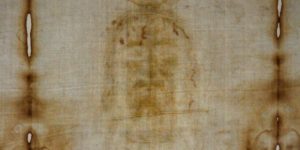A new scientific method revealed that the Shroud of Turin may truly originate from the 1st Century, around the time of the death and resurrection of Jesus Christ.

Italian scientist Liberato De Caro told the National Catholic Register (NCR) that his fabric test shows the Shroud is roughly 2,000 years old. De Caro and his colleagues made the discovery by utilizing a technique called “Wide-Angle X-ray Scattering” (WAXS).
The shroud is located in the Cathedral of St. John the Baptist in Turin, Italy. It depicts the image of a crucified man, and scientists and experts have studied it for a long time in an attempt to determine if it could have been the burial cloth of Jesus Christ.
More Accurate Than Carbon Dating
The recent findings by De Caro contradict a well-known 1988 carbon-dating study which suggested that the cloth is around 700 years old. He said the carbon-dating method isn’t great for fabric, explaining there are several possible reasons why the 1988 carbon-14 study may have been mistaken in its conclusions.
“Fabric samples are usually subject to all kinds of contamination, which cannot always be controlled and completely removed from the dated specimen,” De Caro explained to NCR.
“If the cleaning procedure of the sample is not thoroughly performed, carbon-14 dating is not reliable,” he explained. “This may have been the case in 1988, as confirmed by experimental evidence showing that when moving from the periphery towards the center of the sheet, along the longest side, there is a significant increase in carbon-14 (radiocarbon dating).”
A website called Aleteia reports that De Caro further explained there’s greater accuracy when data is obtained by using the WAXS method. He said the technique was used on various samples of historical fabrics that date from 3000 BC to 2000 AD.
The scientist compared the Shroud of Turin with those samples and discovered that it best matched a piece of fabric from the siege of Masada, Israel, in 55-74 AD.
“The technique of dating linen by X-ray is non-destructive,” De Caro noted. “Therefore, it can be repeated several times on the same sample. It would be more than desirable to have a collection of X-ray measurements carried out by several laboratories, on several samples, at most millimetric in size, taken from the Shroud.”
The Shroud Also Contains Mideast Pollen
Lastly, De Caro pointed to factors that could trace the shroud’s migration from the Middle East to Europe. He said analysis of the shroud showed samples of pollen from the ancient region of Palestine, which could not have developed in Europe, according to Aleteia. This discovery implies that the Shroud of Turin spent extensive time in the Middle East.






